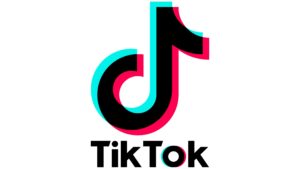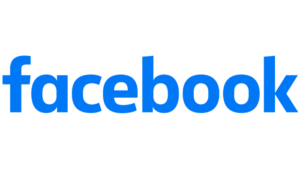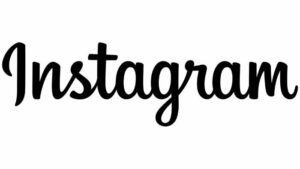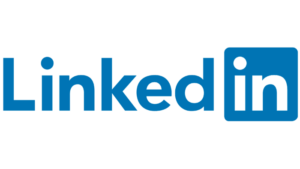Why Is Recruiting on Social Media a Popular Way to Find Employees?
Recruiting on social media has become an increasingly popular method for finding employees because the primary job seekers in today’s market are millennials. This generation of employees understands how to use the internet and spends a substantial amount of time on social media networks like Facebook and Instagram. While the traditional recruitment methods are still effective, utilizing a social recruitment strategy will help you reach millennials who may have been more difficult to reach via traditional methods.
Recent studies show that around 32 percent of the top companies in the world use social media platforms for their recruitment strategy. To understand just how popular social media platforms have become, nearly 3.5 billion people use some type of social media platform, which equates to around 45 percent of the entire population. If you want to use social media for recruiting purposes, keep in mind that it’s not enough to just increase the amount of content that you place on social media. You need to put in the work to differentiate your business from the rest.
There are several different strategies that you can use to enhance your social recruitment throughout the remainder of 2020 and into 2021. For instance, it’s important that you integrate videos into your social recruiting efforts alongside any written content. If you’re after top talent, these professionals will expect depth and substance to your content. When you create videos and articles that are presented as puff pieces that lack substance, the professionals you’re attempting to recruit likely won’t be interested.
Before you delve deeply into social recruiting, it’s also very important that you maintain consistency across every social media platform. If you implement recruiting techniques on LinkedIn, Instagram, and Facebook, the messaging that you place in these channels should be consistent. If a top recruit of yours finds that your recruiting content is different on Facebook when compared to LinkedIn, they may find that you are being insincere. The top advantages of recruiting through social media include:
- You can more readily get in touch with candidates who aren’t passively searching for a job
- You can better identify suitable candidates from the information that’s available on social networks
- It’s possible that the content you create will go viral, which means that it will have an expansive reach
- You can cultivate a strong image relatively quickly, which will help with your employer branding and make your business more appealing for top talent
- You can measure and analyze the results of your content and recruitment efforts with social media analytics
Which Social Media Platforms Will Be Most Productive for Recruiting in 2021?
There are a myriad of different social media platforms that you can use for recruiting in 2021, the most popular of which include Facebook, Twitter, Instagram, YouTube, LinkedIn, and TikTok. While TikTok is the newest social media platform that has only been around since 2016, it has already garnered over one billion customers. This particular platform focuses on short-form mobile videos, which gives you the opportunity to put your video content creation skills to the test.
 When looking specifically at TikTok, there are several methods you can use when recruiting on this platform. The videos you create should show your business and work environment in a positive light. For one, it’s important that your employees are front and center in the videos you make for TikTok, which will allow the top talent you’re seeking to gain a better understanding of your work environment.
When looking specifically at TikTok, there are several methods you can use when recruiting on this platform. The videos you create should show your business and work environment in a positive light. For one, it’s important that your employees are front and center in the videos you make for TikTok, which will allow the top talent you’re seeking to gain a better understanding of your work environment.
Since TikTok is a relatively fun and informal platform, consider implementing some light humor into the videos you make. It’s also highly recommended that you tap into hashtag challenges that are available through TikTok. These challenges involve asking viewers to perform specific tasks, after which the task will be tagged with a certain hashtag. If the challenge is popular enough, it could go viral and bring more eyes to your content.

If you want to use the social media platform with the most members, Facebook boasts one billion users per day, which covers a wide range of demographics. While millennials are a large percentage of the Facebook audience, more than 50 percent of individuals above the age of 65 are also members of this platform, which means that you can find practically any type of employee on Facebook.
Likely the most notable feature for Facebook recruiting is the “Jobs” tab feature, which gives you the opportunity to create a job post on Facebook with a few clicks of a button. However, don’t overlook the opportunity for your employees themselves to share open jobs across Facebook. Having employees share jobs, for example as part of an employee referral program, will not only allow you to reach new audiences, but it also means your employees will be ambassadors for your company and that’s excellent for your employer branding.
 If you decide to engage in Instagram recruiting, this particular platform focuses on images and short videos as the main components of their content. The videos that you place on Instagram can be as long as 60 seconds. The images that you post when recruiting on Instagram should include your company logo. When you use hashtags with your content, make sure that these hashtags are related to hiring, which makes it easier for professionals to find your content.
If you decide to engage in Instagram recruiting, this particular platform focuses on images and short videos as the main components of their content. The videos that you place on Instagram can be as long as 60 seconds. The images that you post when recruiting on Instagram should include your company logo. When you use hashtags with your content, make sure that these hashtags are related to hiring, which makes it easier for professionals to find your content.
 LinkedIn recruiting is more straightforward than most other social media platforms since LinkedIn is designed as an employment-oriented platform. Because this platform is automatically geared towards recruitment, many businesses and employers forego using any strategy when recruiting on LinkedIn. If you want your recruiting efforts to be as effective as possible, there are several different techniques you should employ.
LinkedIn recruiting is more straightforward than most other social media platforms since LinkedIn is designed as an employment-oriented platform. Because this platform is automatically geared towards recruitment, many businesses and employers forego using any strategy when recruiting on LinkedIn. If you want your recruiting efforts to be as effective as possible, there are several different techniques you should employ.
When you start to use LinkedIn for recruiting purposes, keep in mind that there are millions of workers who have accounts on this platform, which means that you should be able to find top talent for the positions you’re hiring for. This platform is also mobile-friendly, which gives you the opportunity to reach millennials and other users who mainly browse the internet via their smartphones.
While there are several techniques you can use to recruit talent on LinkedIn, the latest trend for many employers is to take advantage of the LinkedIn Recruiter tool, which is currently used by more than 1.6 million talent professionals. This tool is a hiring platform that allows you to identify, connect with, and eventually manage the individuals you wish to hire for your team. Similar to Facebook though, your employees usually are an invaluable asset in helping cut through the noise on LinkedIn and can help find you the right candidates in their LinkedIn networks so it’s definitely worth it to consider getting them on board as part of your recruiting strategy.
How Do You Find the Right Platform for a Specific Target Group?
The platform that you decide to use for your social recruiting efforts depends on the specific target group that you’re after. If you want to hire professionals from all demographics and age groups, Facebook has the most diverse base of users, which should make it easier for you to bring in all kinds of employees. Around 90 percent of millennials use Facebook. When looking specifically at Generation X, more than 77 percent of this generation is on Facebook, which goes to show that you can reach any age group through this platform.
On the other hand, certain social media platforms are better than others for specific target groups. For instance, more than 50 percent of online users between the ages of 18-29 use Instagram. In Germany, around 33 percent of Instagram users are between the ages of 25-34. If you want to bring in talented individuals who have recently graduated college, Instagram may be your best option.
As for LinkedIn, the majority of their users are between the ages of 36-55, which is perfect if you’re searching for professionals who have garnered a significant amount of experience over the years. If you decide to go with Tik Tok, upwards of 50 percent of users are below the age of 34. Once you identify your target audience, you should have a better understanding of which social media platform would be ideal for your recruiting efforts.
How Do You Adapt the Content and Frequency to Each Platform and Target Group?
Many businesses and employers make the mistake of creating the same type of content with each social media platform that they use. While it’s very important that you maintain consistency across every platform with your recruiting efforts, it’s essential that you adapt the content and frequency to each target group and platform. For instance, younger demographics between the ages of 18-34 will be perfectly fine with receiving content on a regular basis. Many of these individuals spend a significant amount of time on social media networks and will be able to interact with consistent content updates.
On the other hand, older demographics tend to view rapid content updates as spam, which means that they are more likely to become frustrated with your tactics. If you’re targeting professionals between the ages of 40-55, they are looking for content that’s substantive without wasting their time. No matter which platform you use, the quality of your content is essential towards being successful with your recruiting efforts. No one wants to be presented with a shallow article or video that presents your business in the best light possible. They want to know what they are signing up for when sending in an application.
When looking at specific platforms, Tik Tok and Instagram are designed to be used with more digestible and concise content. It’s important that you get your point across in only a few words or with just a single image. As for frequency per platform, Twitter users expect a high volume of posts and content. Publishing more is always better on Twitter. With LinkedIn, it’s been found that companies should publish content around five times per week. The same is true with Facebook.
How Can Recruiting on Social Media Further Promote the Development of Employer Branding in 2021?
When you’re attempting to attract top talent to your company, your employer branding can be very beneficial towards increasing the appeal of your business. Building a strong brand means that your value proposition for prospective employees will be high, which may give you the edge you need to bring in some highly experienced professionals.
Recruiting on social media is a great way to promote the enhancement of your employer branding efforts. If you want to appeal to millennials, it’s important that they know that your company is attuned to modern advancements and technology. By posting the right content on social media platforms, you can build your employer brand into anything you want it to be.
To simplify your social recruiting efforts, consider using an employee referral program such as Firstbird. When using this program, you will be connected with suitable candidates for any position you’re hiring for. Recruiting via referrals is cost-effective, far-reaching, and efficient. Some of the top features of the Firstbird digital referral program include mobile functionality, employer brand enhancements, and an extensive social reach across all major social networks. If you’re interested in how other companies use their employee referral programs for social recruiting, you can check out their Employee Referral Benchmark Study.
Recruiting via social media can be a wonderful option as long as you use the right channels for your brand and make sure that your content matches the kind of quality that users would be interested in. In 2021, users are more likely than ever to access social media platforms via their smartphone, which is why the content you post should be mobile-friendly. With the right strategies, you can start attracting top talent through platforms like Facebook, Instagram, and LinkedIn.